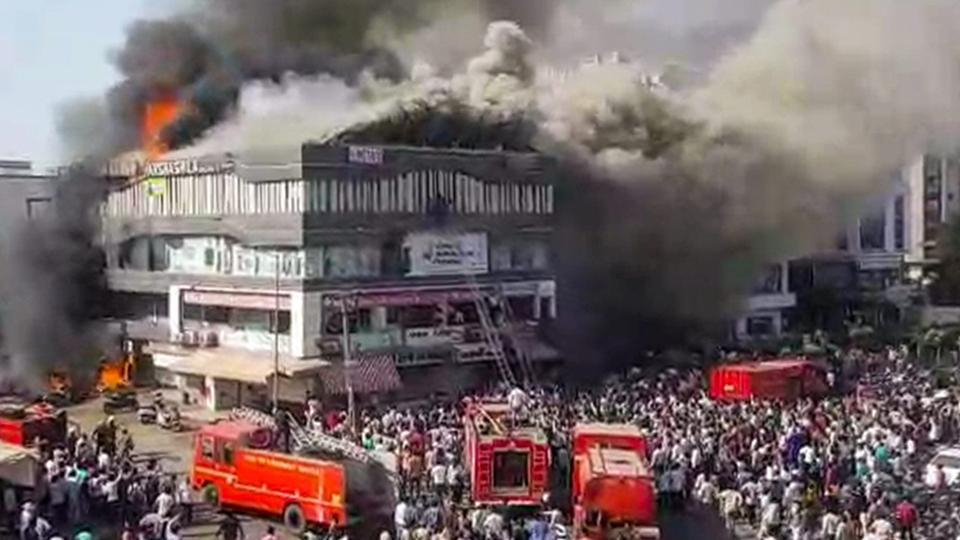Dear Sir,
As I looked for the right authority to appeal to after Surat tragedy, I have picked RERA because I see it as a new thought and hence, sans legacy burden, you may be open enough to explore your mandate of securing the “interest of the consumers and developers in the real estate sector through effective and fair regulation.”
As you are the sole guardian angel of private development, your job can’t be limited to dispute-resolver for existing problems but must be looked at as a visionary policy-maker who makes regulations to prevent and mitigate such problems from occurring, so I have a specific plead for your consideration.
From Surat fire to leaking bathrooms, the root cause of every problem that comes to your table has a single origin, i.e. violation of law, so let us look at the statutory provisions that guide building construction in India.
Broadly speaking, a building must follow local General Development Control Regulations (GDCR), National Building Code (NBC) and in addition to these, construction activity must follow relevant Indian Standards (IS) codes.
If a building is made as per GDCR, NBC and IS code provisions, it will not have unauthorised construction (GDRC), will be safe to use (NBC), will be devoid of quality issues (IS code) and hence chairman RERA can go on a long vacation!
But, you are well aware that there is no vacation ahead of you, let us see what can be done to make your life more comfortable. If I simplify the current situation, we have two major state-holders to ensure that all buildings are compliant to GDCR, NBC and IS code provisions.
So, it is mainly the architect, armed by the Architect Act 1971, who is in charge of GDCR and NBC compliance and two civil engineers, a structural engineer and a clerk of works who ensure that construction is done as per IS codes (and parts of NBC).
The problem is, an architect is not really trained in engineering and is more comfortable with complex stuff like “juxtaposition of materiality on to the urban fabric” than with legal compliance; the governing body of the architects, i.e. Council of Architecture, India insists on having a delusionthat architects are engineers and lawyers and everything under the Sun. So, CoA constantly tries to hold on the claiming expertise and inclination that architects just don’t have.
On the other hand, due to amazing sense of priority that India has, we have Engineers Act waiting for getting approval since decades in our parliament, so poor engineers, lacking professional recognition are made to play the second fiddle.
In addition to this, the architect-builder relationship is that of meek-mighty whereby voice of law and technology is silenced by might of money. So, even though Architect Act has envisaged that architect will be a moral authority guarding social interest in real estate sector, the lawlessness of the sector shows that he has failed to do his job.
If this is not enough, even if a building is constructed compliant to all laws, there is no one stopping the builder or the owner from making unauthorised and illegal alterations later.
If we sum things up, we have a professional entrusted with enforcement who has failed to do his/her job and we have a big issue of post-occupation illegal alteration. So, we need to create a new professional and we need to install a system of building audits post-occupation.
If we look at the above, it is easy to see that Chartered Accountant is a role model to ape as a solution, as we need people with expert knowledge about legal provisions who can certify a building and then audit it on regular bases.
What RERA needs to do is to sit with GTU, CREDAI, Indian Institute of Engineers and Urban Authorities and constitute an examination-based system (matching in vigour with CA examination) that yields professionals that may be recognised as Chartered Engineers who can step in the role (partially) played by an architect today.
While I would love CE to be a national phenomenon, it may need to be kept local as GDCRs are likely to be local in nature as urban development is more of a state matter and hence experts specificto a state would be required for better compliance to GDCR.
In addition to this, such a move will also serve in generating employment for thousands of engineers that pass out every year and poor architect can go back to drinking coffee and discussing relevance of postmodernism instead of worrying about going to jail for things they can neither understand nor are interested in but are currently responsible without being aware.
— Samir Shukla
